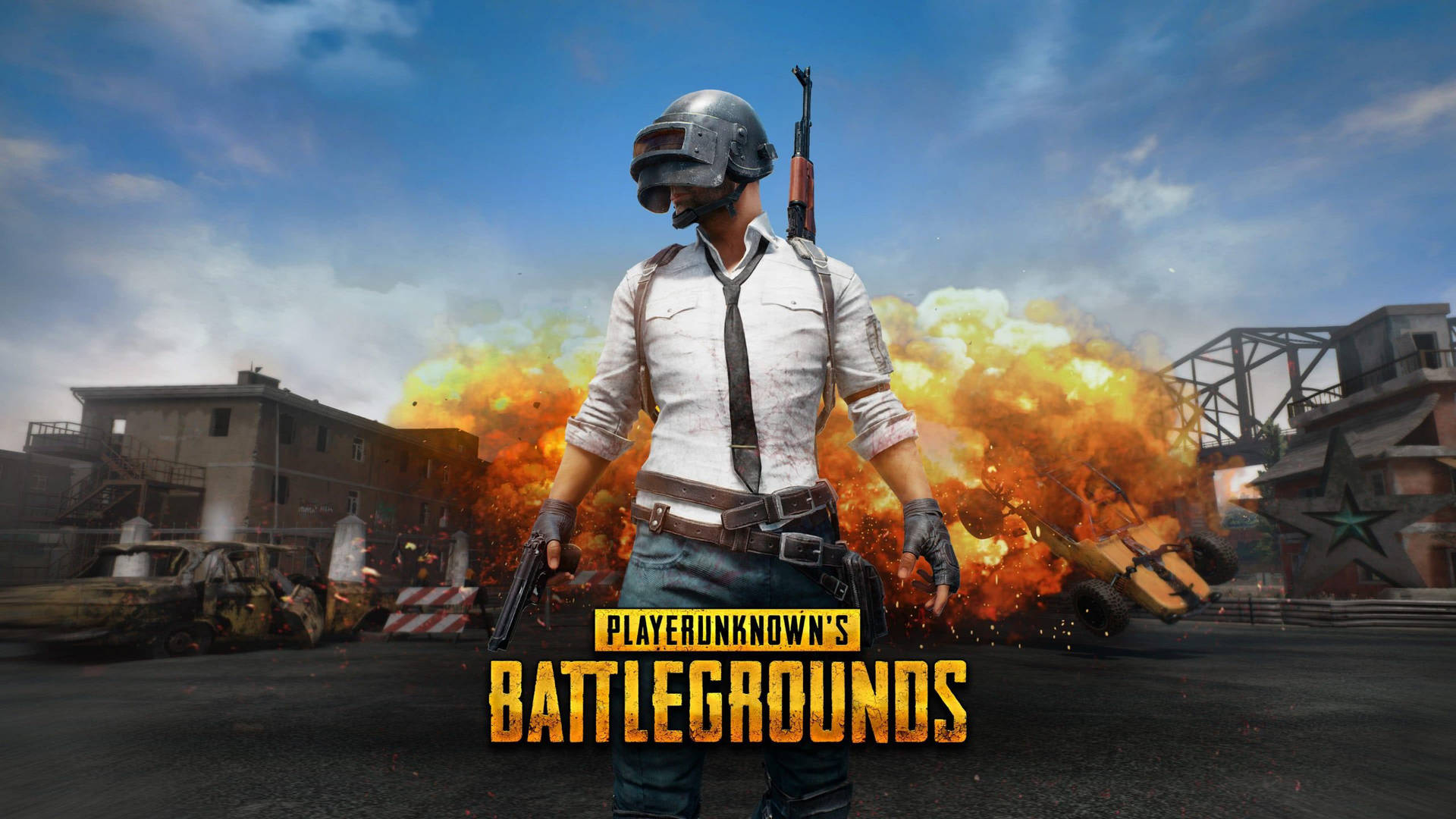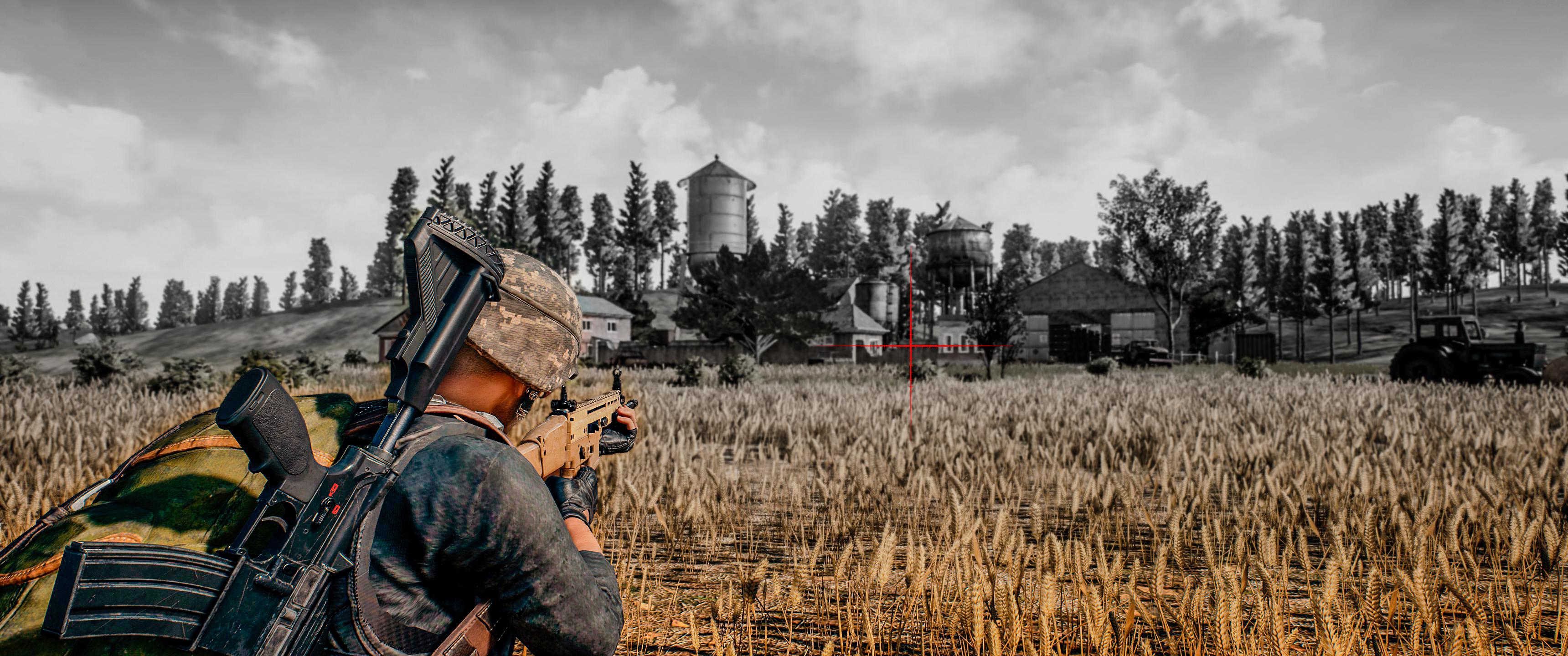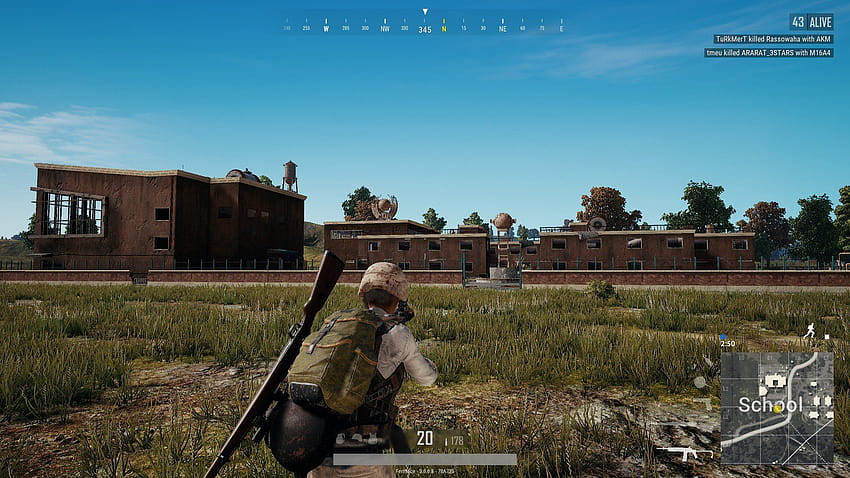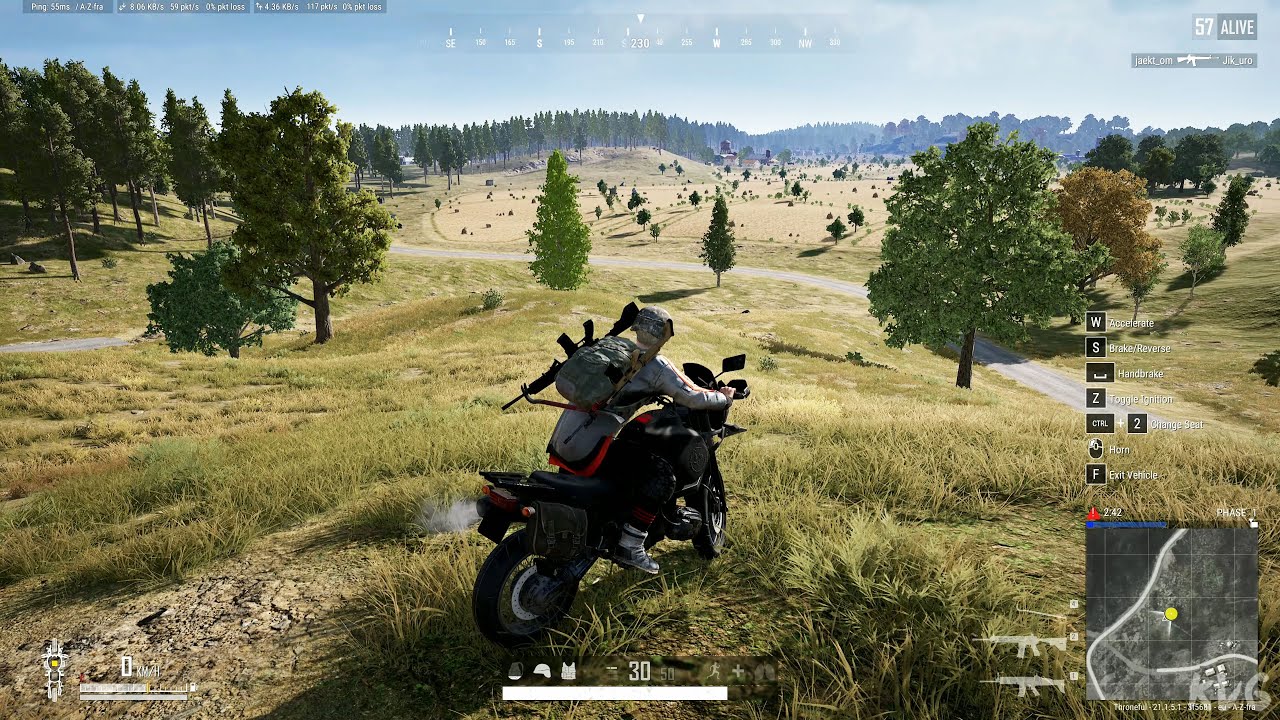PUBG and the Playable Crisis: Simulated Violence, Addictive Pleasure, and Evolving Game Design
By James Hoang

Figure 1: PUBG cover image.
Source: Unknown. (n.d.). PUBG cover art [Image]. Pxfuel. https://www.pxfuel.com/en/desktop-wallpaper-fijgm
Introduction
Player Unknown's Battlegrounds (PUBG), launched in 2017, is an online multiplayer battle royale game that has attracted people all over the world. Players descend from a plane on to the large virtual playing ground, gathering gear and weapons along the way as they battle for survival. With over one billion downloads and the presence of healthy esports, PUBG has changed how we think about virtual fighting. The game's massive popularity has sparked controversy surrounding addiction, aggression, and mental health (Sunil et al., 2021). Also, as more people take part in this simulation of high-pressure scenarios, PUBG has transformed into more than just the experience of playing the game: it is now a popular culture trend that reflects as well as projects at large the issues of society.
This study argues that PUBG's long-term capability as well as ability to spread across cultures can be traced to the game's power to grant simulated violence, coordinate player action through hedonic addict motivators, as well as adopt classical shooting mechanisms in the face of uncertainty as well as survivalist action, entertainment as well as cultural object of comment on social problems.
To support this claim, I utilize three broad concepts: (1) simulation and mixing real life with digital worlds; (2) hedonistic motivation in combination with game-play consumption; and (3) the creation of first-person shooter (FPS) style mechanisms in the battle royale game genre. With the in-depth analysis and consideration of the game mechanisms presented in this paper, we explore the virtual space's separation from reality as defined by PUBG, the role of behavioral intentions in the form of pleasure-based mechanisms, as well as the competitive game design paradigm's progression.

Figure 2: PUBG in-game wheat field sniper scene.
Source: Reddit user. (n.d.). PUBG wheat sniper screenshot [Image]. Reddit. https://i.redd.it/qgzqmyl5bkyc1.jpeg
I. Simulation and Virtual Crisis in PUBG
PUBG creates a digitally constructed combat zone where violence is separated from political or ethical consequence. Players kill and die without much philosophical consideration, aside from resurrecting for the next game. This highly choreographed repeated war-like simulation mimics wars even as it negates the deadly qualities of the same. Lambok Hermanto Sihombing (2022) analyzes how PUBG causes player confusion between reality and fantasy. According to him, the game is actually a simulation without the original, the war recreation based on history or morality, for instance. His analysis indicates that this lack of referent has deep implications, particularly for teenagers. Sihombing cites the case of Zain Ali, the Pakistani teen who killed his mother and two younger brothers in the belief that the latter would "respawn" like the game's PUBG mechanisms. This case is one of the consequences of simulated system in shaping real thoughts as well as behavior patterns (Sihombing, 2022).
The soundscape of PlayerUnknown's Battlegrounds (PUBG), comprised of weaponry sounds in combination with the climax of in-game action, entices its listeners while at the same time providing the mental environment of reduced critical consciousness. Raza et al. (2024) further revealed that frequent exposure to the explicit aggression presented in PUBG is related to the heightened aggression in adolescents, consequently supporting the claim that the immersive simulation of the game has direct effects on the responses of behavior (Raza et al., 2024).
In PUBG, individuals do not only play war but exist within a virtual battlefield that removes the symbolic distance between game and world. The game offers violent gratification in a zone of non-moral consequences, creating a playable crisis that exposes modern culture's desensitization towards violence. Secondly, the game's interface serves the same purpose. The symbols projected on the map, the settings of weapons, and the indicators of health transform the raw experience of violence into a symbolic image with deeper meaning. Thirdly, the killing is automated by code in the game, further removing the player's experience from real violence. Killing is as automated as the mere action of clicking on the mouse button. This shows how simulated environments reshape human beings' experiences of power and violence in virtual as well as real domains. Moreover, the reward system, in particular, reinforces the illusion of realism. Gains in PUBG come in the form of ranking badges, cosmetic skins, as well as in-game currency. These symbolic victories take their toll psychologically in the material space. Players feel excited and proud after winning a match, the reason being that the feat has no meaning in the material space whatsoever. Thus, PUBG is not about reality, but about replacing it. Instead of reality, the simulation is the space in which identity, worth, as well as social standing, is disputed via gameplay (Sihombing, 2022).

Figure 3: PUBG in-game school zone scene.
Source: Unknown. (n.d.). PUBG school battle [Image]. Pxfuel. https://www.pxfuel.com/en/desktop-wallpaper-jlcah
II. Playful-Consumption and Addictive Hedonics
Its success is the creation of extremely engaging pleasure-based playing experiences. Analyzing PUBG users in Pakistan, Rehman et al. (2022) recognize five leading factors supporting steady engagement: escapist stimulation, affective involvement, sensory engagement, aversion, and enjoyment (Rehman et al., 2022). Such hedonic rationalizations reach beyond function or narrative-based participation. In particular, players aren't engaged via pre-expressed storyline or character progressions; however, they're engaged with the fleeting emotions induced by the game, for example, the thrill of the unintended ambush, the thrill of the rare headshot, as well as the satisfaction received when looting high-rank chests. More specifically, the impact of role-projection and fantasy during the experiment was negligible. This implies that PUBG's appeal is not necessarily linked to the desire to take on the role of the soldier or experience its storyline, but in operating within a well-organized space defined by sensory involvement and related compensation. Nazir (2021) further clarifies why hedonic order is appealing. He cites evidence that shows that players sacrifice meals, ignore sleep, and undergo social isolation in the quest to extend their playing time (Nazir, 2021).
These found patterns closely mirror the idea of Internet Gaming Disorder as defined by Sunil, Sharma, and Anand (2021). Their exhaustive meta-analysis draws ties between playing PUBG and increased rates of anxiety, attention deficit hyperactivity disorder (ADHD), and even suicidal tendencies. According to the authors, playing PUBG is an unhealthy way of dealing with stress for pre-existing mental conditions, setting off a feedback cycle in which the immediate relief is traded for long-term impairment. One of their research participants described the survival dynamics of PUBG in terms of self-empowerment, labeling it as a space in which "I feel in control" (Sunil et al., 2021).
This placebo of agency is the key element in PUBG's hedonic design. Performance is consistently monitored and made explicit: kills, distance traveled, last rank. These indicators provide measurable goals, imposing order upon otherwise potential anarchy. Such design, as Rehman et al. stress, provides for a sort of "playful consumption," in which pleasure is turned into a product, replayed, until it is compulsive (Rehman et al., 2022). PUBG's reward system, from its leveling system to Royale Pass, creates a reward cycle that is not much different from gambling. Each crate, kill, or level is an in-game psychological trigger that brings people back not by richness of narrative, but by carefully crafted dopamine spikes (Nazir, 2021). It contributes to the game's role as an addictive, pleasant system that both entertains and traps.
Apart from personal gain, the social credit earned by players further cements the addictive model. Wins, ranks, and killings in the game are recorded and shared throughout multiple platforms, turning PUBG victories into social capital. This external reward system encourages the performative game world where players come not only for personal pleasure but also for the recognition of peers. Rehman et al. (2022) also outline that the public presentations of progress contribute towards sustained engagement in the form of peer comparison as well as the quest for recognition. Additionally, game systems such as daily login bonuses and time-limited events create scarcity and pressure, encouraging players to come back even when they may not want to play. Such methods borrowed from behavioral psychology are deliberately made to take advantage of attention and habit formation behavior. Consequently, players don't play PUBG, they schedule their lives around playing PUBG (Sunil et al., 2021).

Figure 4: PUBG Erangle map.
Source: Unknown. (n.d.). PUBG Erangel map overview [Image]. Pxfuel. https://www.pxfuel.com/en/desktop-wallpaper-fzxhn
III. How PlayerUnknown's Battlegrounds Developed Its First-Person Shooter mechanisms
In terms of design, PUBG is a major change for the FPS genre. Traditionally, games like Counter-Strike or Quake III Arena had rapid, fast-action gunfights in symmetrical maps. PUBG introduces open-world survival, random loot drops, and decreasing play areas over time. All of these alter the pace, strategy, and scale of gameplay. Yufei Wang (2021) cites PUBG as a game-changer for the esports FPS genre's design. In her study, she reveals that PUBG departed from earlier models by combining high randomness, extensive downtime, and extensive-scale multiplayer engagements. This creates a game where mechanical proficiency is rewarded, but also tactical patience, risk evaluation, and emotional endurance (Wang, 2021).
Unlike typical shooter games, where one is accustomed to the prevalence of death with little consequence, the one-death-per-match model of PUBG drastically increases the factor of tension. Players must explore large maps, plan in response to opponent movements, and make decisions in high-pressure conditions. According to Wang, this model improves the experience of the player by combining suspense with strategy, whereby the end reward is survival (Wang, 2021). This design also strengthens the immersive experience, possibly intensifying the above-mentioned behavioral impacts. More time per game corresponds with increased emotional investment, consequently making the loss impact much more severe. Raza et al. (2024) maintain that these high-stakes experiences promote the acquisition of aggressive behavior as well as reduced frustration tolerance in underage players (Raza et al., 2024). Nazir (2021) highlights how PUBG's continuous challenges and competitive nature sustain engagement, especially among players seeking dominance and excitement.
Moreover, the incorporation of performance measures and in-game transactions in PUBG increases the amount of interactive involvement. Royalty Pass's objectives and benefits in terms of desired activities lure players to try out everything from shooting weapons to operating vehicles in order to attain desired benefits, hence tilting the playing strategy in pre-planned strategies. Wang argues that this turning performance into a game impacts players' views of success, shifting the lens of involvement from enjoyment to optimization (Wang, 2021). An important innovation in this direction is the spectator mode in PUBG, which lets people watch the progress of the match after their own elimination. This specific mechanism converts moments of loss into learning opportunities. Players learn from the strategies of others, upgrade their knowledge of the playing space, and learn new strategies. This element of spectatorship actually completes the gamifying experience, creating for players a longer lasting and socially interactive learning experience (Wang, 2021).
Overall, the modularity of the gameplay in PUBG, the expression of the solo, duo, and squad modes, is highly suitable for the varied player base it addresses. Players benefit from the freedom of choosing the mode of engagement that best suits them, from the lone, tactical undertaking to the jointly planned offensive scenario. This flexibility has helped maintain the popularity of the game across different player groups as well as inform similar designs in games like Call of Duty: Warzone and Apex Legends (Wang, 2021).

Figure 5: PUBG in-game motercycle scene.
Source: Unknown. (n.d.). PUBG motorbike terrain ride [Image]. Pxfuel. https://www.pxfuel.com/en/desktop-wallpaper-hbxjx
Conclusion
PUBG's cultural impact has much to do with the design of the game itself. As already shown, it operates as a site of simulation, has addictive properties, and is characteristic of innovation. It is possible to interpret PUBG as a constructed space in which violence has no consequences. If read as one of playful consumption, it is clear the way in which PUBG stages sensation, stimulation, and satisfaction, making the playing experience very important (Rehman et al., 2022; Nazir, 2021). Finally, in the way it adapts first-person shooter genre, PUBG cultivates new modes of communication linking the player to the game itself as well as to other players (Wang, 2021). These factors comprise the long-running cultural crisis: the time in which games like PUBG mirror and echo the confusing digital life. Here, war is offered as entertainment, adaptation as dependency, and skill as improvement. If PUBG is a battlefield, it is at the same time restriction as well as interaction, competition as well as coexistence, conflict as well as conversation. Subsequent research should explore how games like these could be produced more responsibly, with safeguards against addiction and increased commitment to player well-being. As gaming dissolves the line between play and life ever more completely, our critical thinking has to move alongside it. PUBG is a game but also a symptom of our playable crisis.

Figure 6: PUBG in-game knocking scene.
Source: Unknown. (n.d.). PUBG squad wallpaper [Image]. Pxfuel. https://www.pxfuel.com/en/desktop-wallpaper-jlcah
References
- Nazir, R. (2021). Increasing effects of PUBG playing: A study of youth behavior in Pakistan. Pakistan Journal of Social Research, 3(4), 1084-1094. Retrieved from
https://www.pjsr.com.pk/wp-content/uploads/2022/03/70.-Vol-3.-Issue-4.-Dec-2021-Nazir-Increasing-Effects-of-PUBG-Playing.pdf - Raza, S., Naveed, R., Asim, M., Hassan, S., & Kanwal, R. (2024). Impact of the violent video game on the social behavior of players: A study of young PUBG players. Pakistan Journal of Social Sciences, 10(1), 23-34. Retrieved from
https://www.researchgate.net/publication/384386589 - Rehman, S. U., Waheed, M., & Ahmad, N. (2022). Playful-consumption and behavioral intention: A study of PUBG players. Frontiers in Psychology, 13, 909875. Retrieved from
https://doi.org/10.3389/fpsyg.2022.909875 - Sihombing, L. H. (2022). PUBG: Between real and unreal. Jurnal Humaniora Teknologi dan Industri Kreatif, 1(2), 1-9. Retrieved from
https://www.researchgate.net/publication/365599978_PUBG_BETWEEN_REAL_AND_UNREAL - Sunil, S., Sharma, M. K., & Anand, N. (2021). Impact of PlayerUnknown's Battlegrounds (PUBG) on mental health. Indian Journal of Psychological Medicine, 43(3), 255-260. Retrieved from
https://doi.org/10.1177/0025817220981817 - Wang, Y. (2021). The evolving game mechanics in esports first-person shooter games (Master's thesis, Northeastern University). Northeastern University Digital Repository. Retrieved from
https://repository.library.northeastern.edu/files/neu%3Abz61dw730/fulltext.pdf